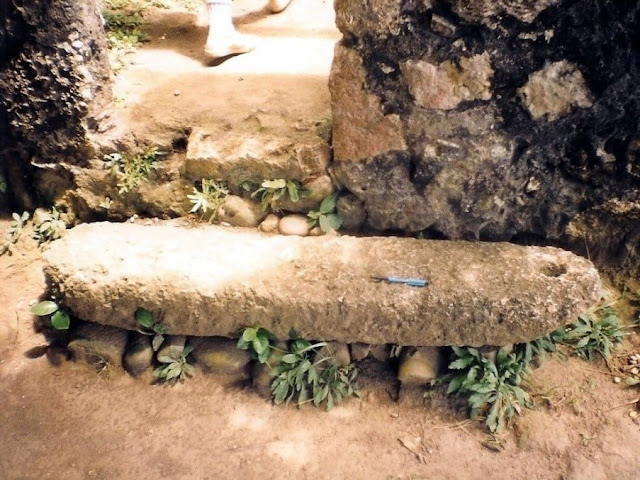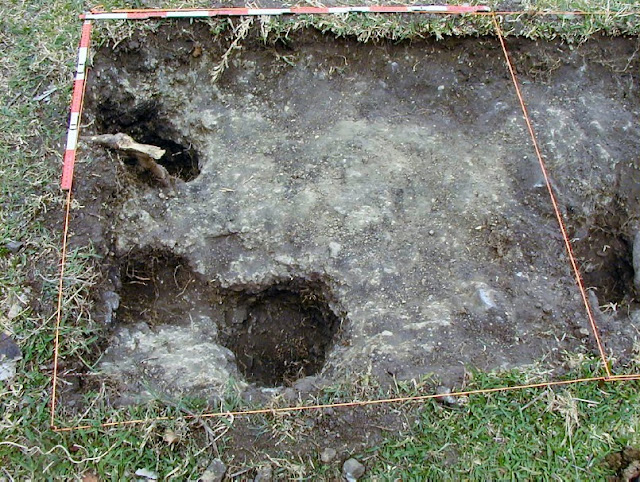What are these, and how did they serve the precolonial island inhabitants?
Derived from the Ivatan word “idi”, a variant of “ili”, ijang literally means refuge, mountain fortress, or a village or town. Ijangs were first described by English navigator, Captain William Dampier, who visited Batanes in 1687. He mentioned the presence of house terraces reinforced by dry stonework, which were accessible only by ladders from below.
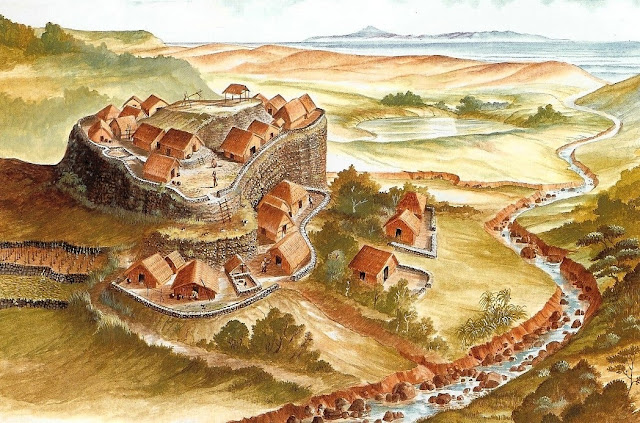 |
| Reconstructed artist’s concept of Savidug iiang. (Photo courtesy of Dr. Eusebio Dizon) |
An ijang is a fortress strategically located on a rocky elevated landscape, usually on hilltops or ridges. It is protected by naturally occurring steep cliffs and may occur inland or on coastal areas. Precolonial Ivatans took refuge in these structures from aggressors whom they hurled down with rocks. According to the late Ivatan cultural historian, Dr. Florentino Hornedo, every known Ivatan community had an ijang, built because of prolonged defensive stance against enemies, usually from hostile clans.
At least 21 ijang sites were archaeologically documented throughout the islands of Batan, Sabtang, Itbayat and Ivuhos, first by Japanese researchers from the University of Kumamoto in 1982, then by the #NationalMuseumPH led by Dr. Eusebio Dizon beginning in 1994. Excavations revealed that aside from being defensive structures, the sites were primarily used for habitation.
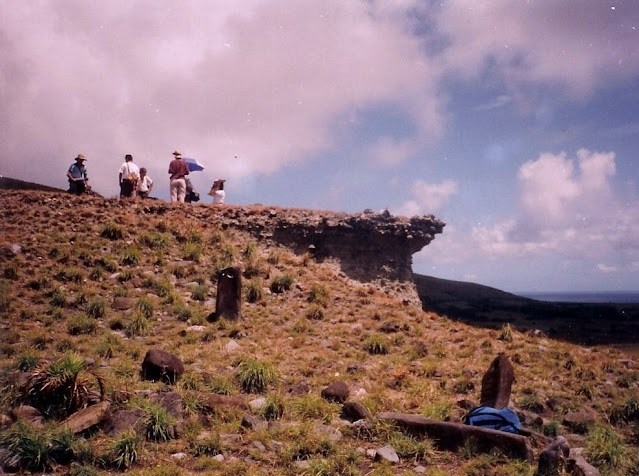 |
| The National Museum of the Philippines team conducting a site survey at Savidug ijang site in 1994. (Photo courtesy of Dr. Eusebio Dizon) |
The Savidug ijang, located at about 1.2 km southwest of Savidug village in Sabtang Island, is one of the most extensively studied ijang sites. Evidences of human settlement were found in this 10th to 14th century sites, such as postholes, stone wall foundations, perforated stone pillars, and indication of ripraps. Artifacts like glass beads, red-slipped pottery, and ceramic wares from the Song and Yuan dynasties were also recovered.
 |
| The ijang served as a defensive fortress for precolonial Ivatans, built on elevated grounds and protected by steep cliffs. (Photo courtesy of Dr. Eusebio Dizon). |
Meanwhile, some of the terraces surrounding the habitation areas were used for agricultural purposes, as they were determined to be suitable for planting camote and other traditional crops. By the early 18th century, Spanish colonizers forced the locals to abandon these hilltop settlements to transfer permanently into pueblos or town centers for their more effective administration.
Dr. Grace Barretto-Tesoro of the Archaeological Studies Program at the University of the Philippines noted in her 1999 study that the concept of hilltop settlements is a common cultural feature among Austronesian societies. There are still remnants of ijangs around Batanes today. If not covered with overgrown vegetation, they are usually utilized by the locals as pasture. Try to look for these precolonial settlements’ ruins when you visit the NMP Batanes Area Museum in Uyugan. Now classified as Modified General Community Quarantine (MGCQ) areas, our facilities remain open to welcome visitors, following properly observed health and safety guidelines.
Stone Sinkers Excavated from the Batanes Islands
Simple, non-striking, and unimportant stones? Let’s find out.
A stone sinker varies in size and functions as an anchor, plummet, or weight for nets and fishing lines. Its form can be modified into oval, spherical, triangular, rectangular, or donut-like shapes. Usually notched, perforated, or grooved sinkers are stone tool artifacts recovered from archaeological sites across the globe, particularly in wetland, dried riverbed/stream, coastal areas, or within a nearby water source. It is a fishing technology that dates to the Upper Paleolithic Period (circa 40,000–30,000 Before Common Era or BCE) as evidenced by the discovery of 29,000-year-old stone sinkers in the Maedun Cave in Gangwon Province, South Korea.
In the Batanes Islands, stone sinkers were recovered in 1982 by researchers from the Kumamoto University of Japan, and during the 2002–2007 archaeological activities in the islands of Batan, Sabtang, and Itbayat.
The 2002–2007 Batanes fieldwork was a collaborative research project that involved the #NationalMuseumPH, Australian National University (ANU), and the University of the Philippines’ Archaeological Studies Program, along with representatives from partner academic institutions. The stone sinkers from Batanes excavated in the 2000s at the Savidug Dune Site in Sabtang Island and Sunget Site in Batan Island, were mostly notched on opposite sides, and dated to the Neolithic Period—1,100 to late first millennium BCE and 1,200 to 800 BCE, respectively.
In her 2006 master’s thesis, “Fishing Sinkers in the Batanes Islands (Philippines) and Taiwan, and Further Relationships with East Asia”, Shawna Hsiu-Ying Yang explains the similarity in form between the Sunget Site pebble sinkers and those found in Taiwan’s early Neolithic (i.e. Dapenkeng culture) sites prior to 2,500 BCE. The sinkers’ likeness suggests that the early inhabitants of Batanes possibly came from Taiwan, bringing with them the knowledge of manufacturing pebbles as sinkers, which endured on the island until around 2 millenniums ago.
 |
| Mapping activity at Sunget Site (Sunget Top Terrace) led by Dr. Peter Bellwood with some of the team members. Photo by A de Leon (2003). |
 |
| The excavation area at Savidug Dune Site in Sabtang Island, situated on an 8-m high cliff fronting the sea. Photo by Dr. Julien Corny (2007). |
Furthermore, the excavation of side-notched pebble sinkers and a Fengtian nephrite lingling-o within the same cultural layer in Savidug Dune Site archaeologically supports the cultural connection between the Philippines and Taiwan, as noted by Dr. Hsiao-chun Hung of ANU and Dr. Yoshiyuki Iizuka of Academia Sinica.
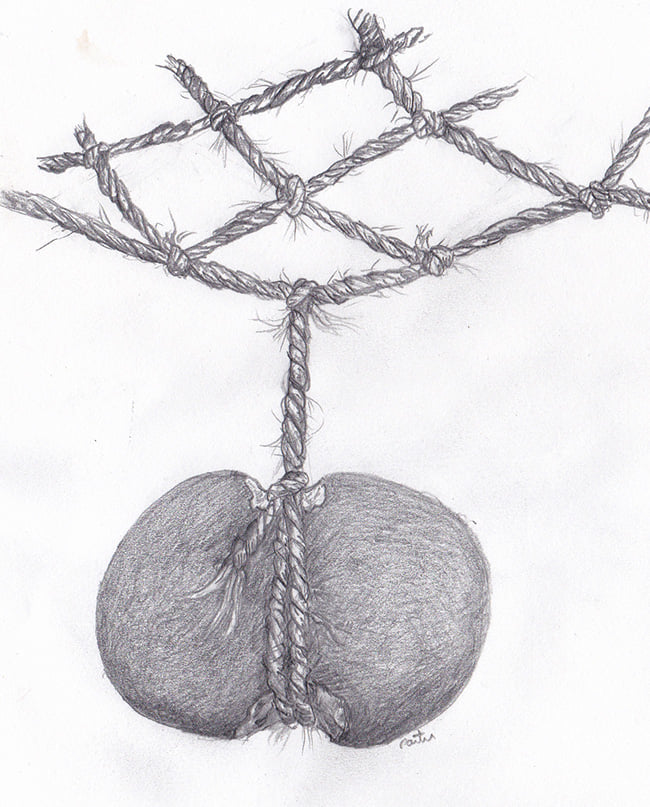 |
| An illustration of a stone sinker and its probable method of attachment as a net weight. Image by Mr. Larry Porter of University of Arkansas System – Arkansas Archaeological Survey and retrieved from his 2020 webpage article “Notched Stone Net Sinkers” ( https://archeology.uark.edu/artifacts/netsinkers/ ) |
Beyond the stone sinker’s plain look is an indispensable and relevant archaeological piece in reconstructing people’s lifeways, interactions, and movements in the past, indicative of how the sea and ocean are linked with their lives.
Some of the side-notched pebble sinkers along with other artifacts from the Batanes Islands are on display at the “Palayok: The Ceramic Heritage of the Philippines” exhibit.
The Ijangs - Archaeological Wonder in Batanes [Philippines] - yodisphere.com
![The Ijangs - Archaeological Wonder in Batanes [Philippines] The Ijangs - Archaeological Wonder in Batanes [Philippines]](https://1.bp.blogspot.com/-SyiOZkq9eUs/YGKs91Ewa0I/AAAAAAAAakw/lbSXNKXM7OkR4dw2LPjV0Ea7GUgP_vBAQCLcBGAsYHQ/w640-h464/166359990_4152141884810098_3504933886913800462_o.jpg)

